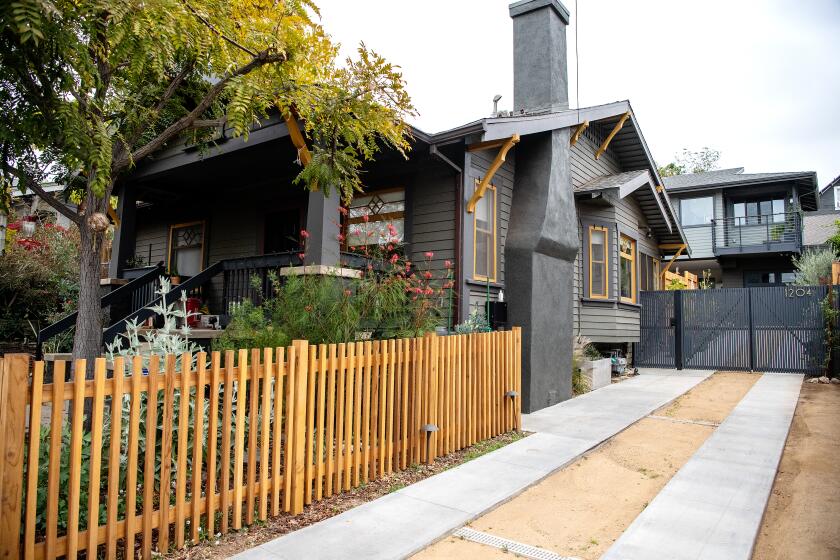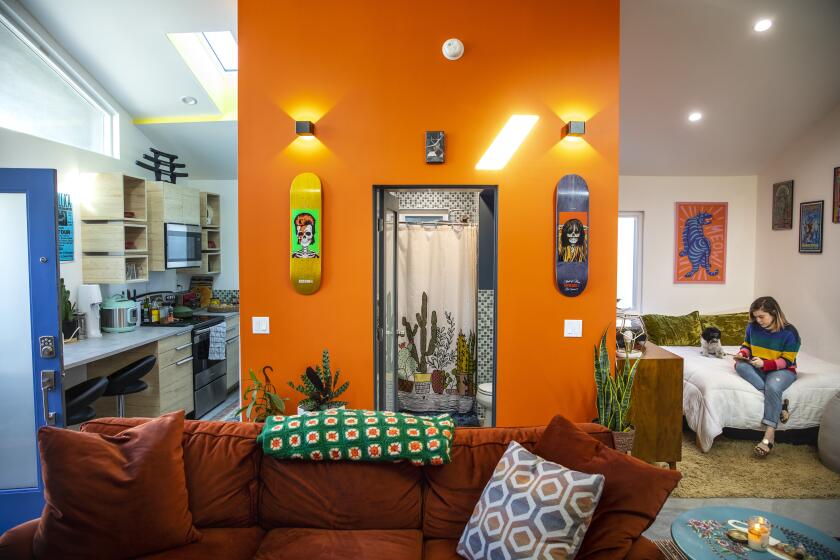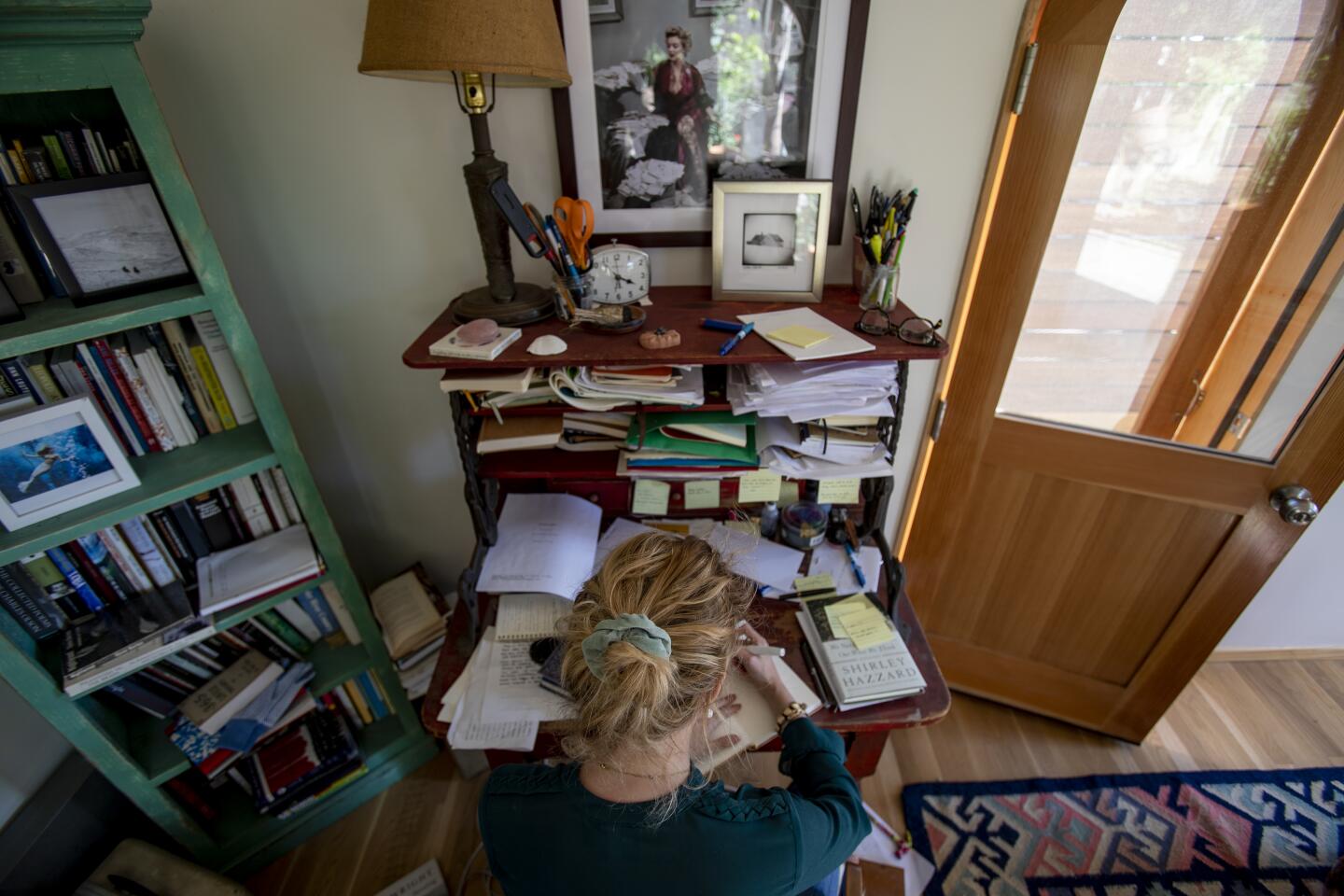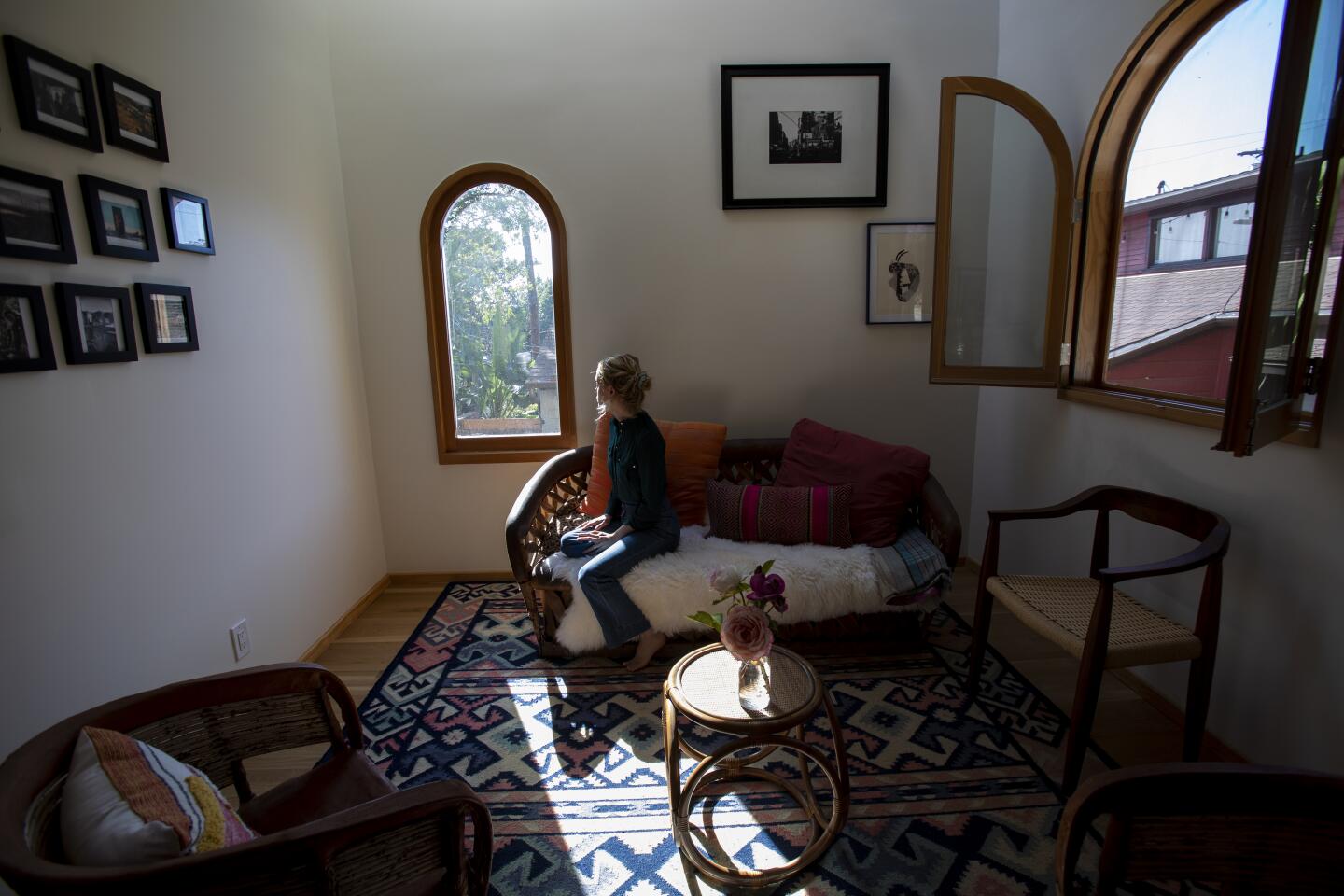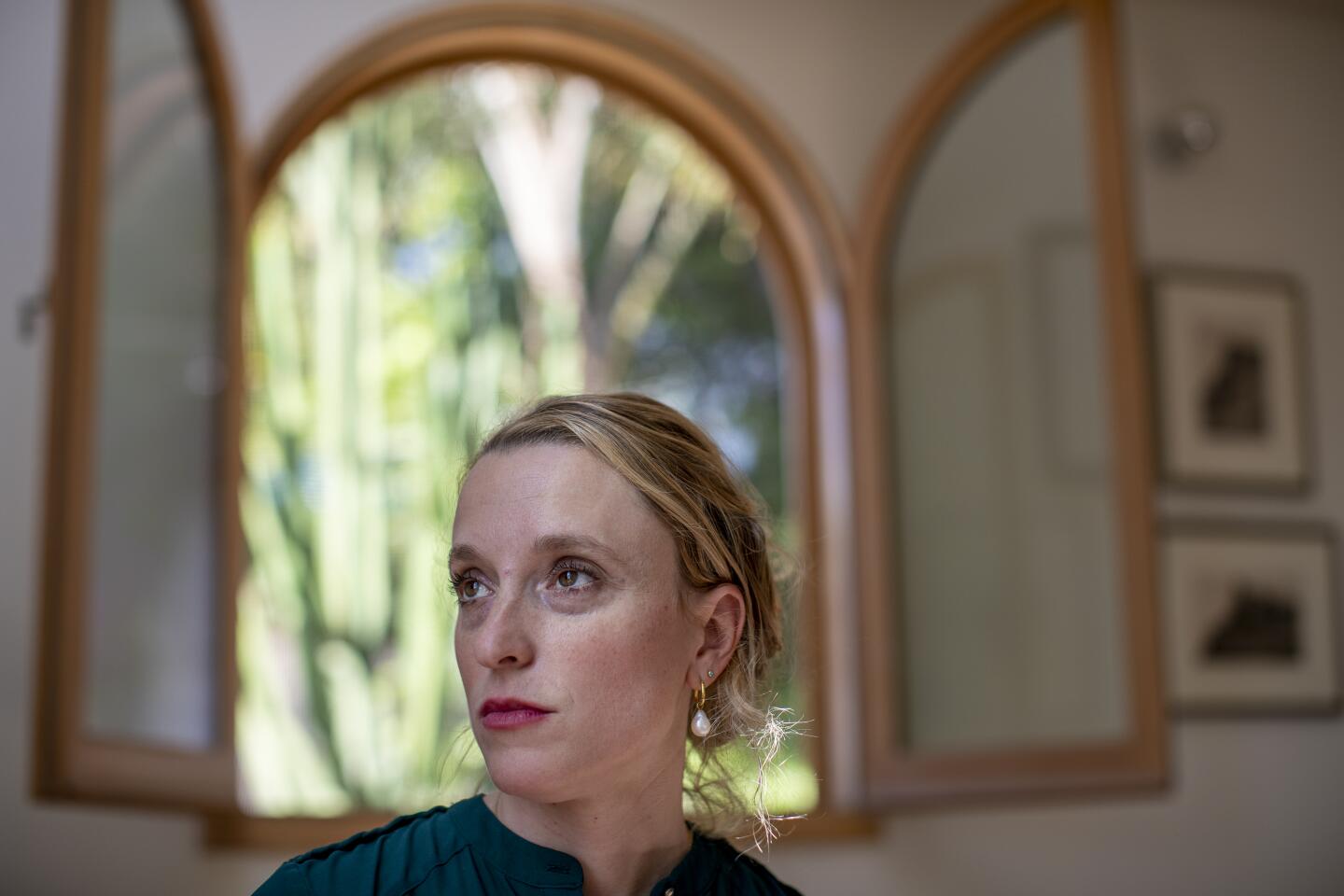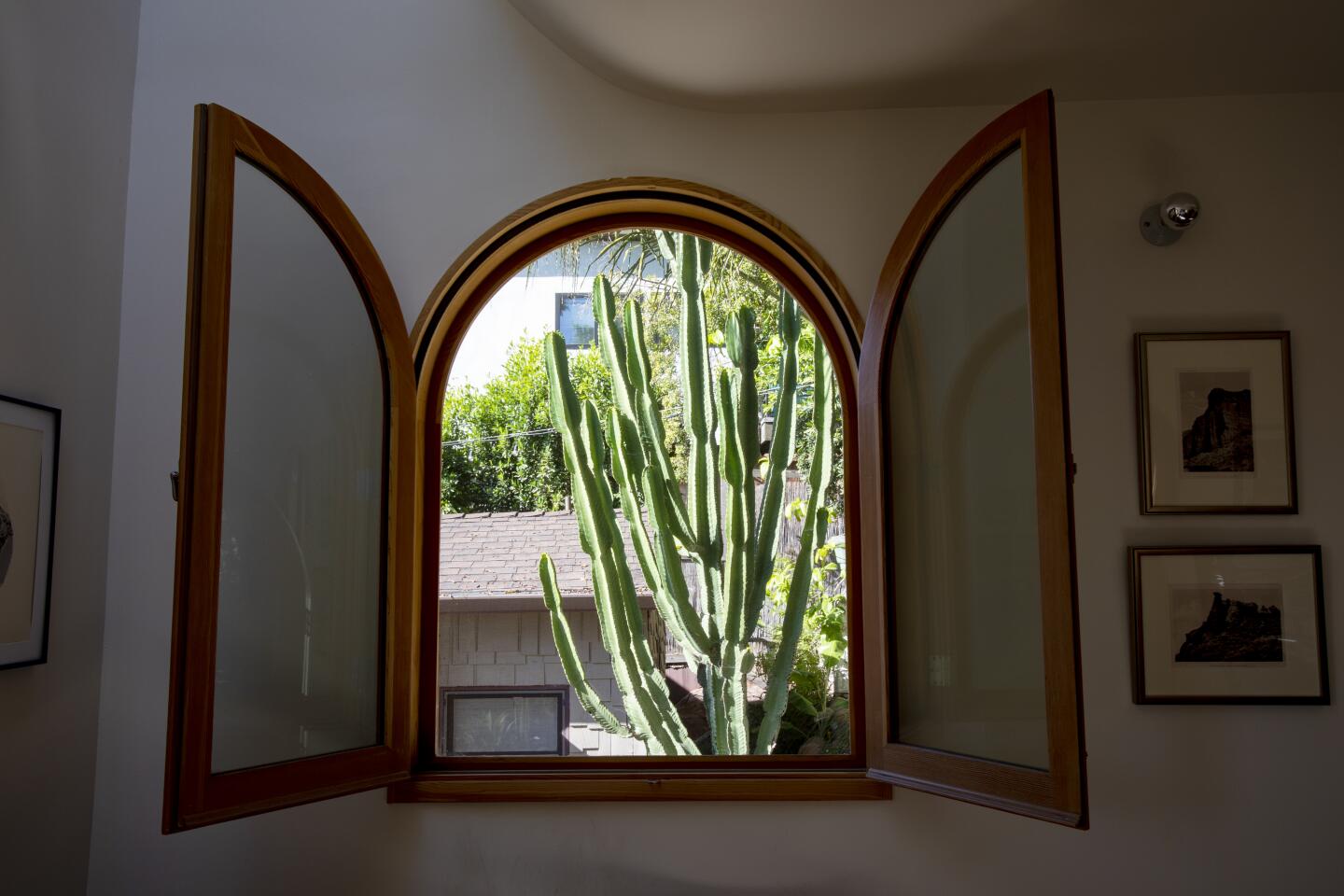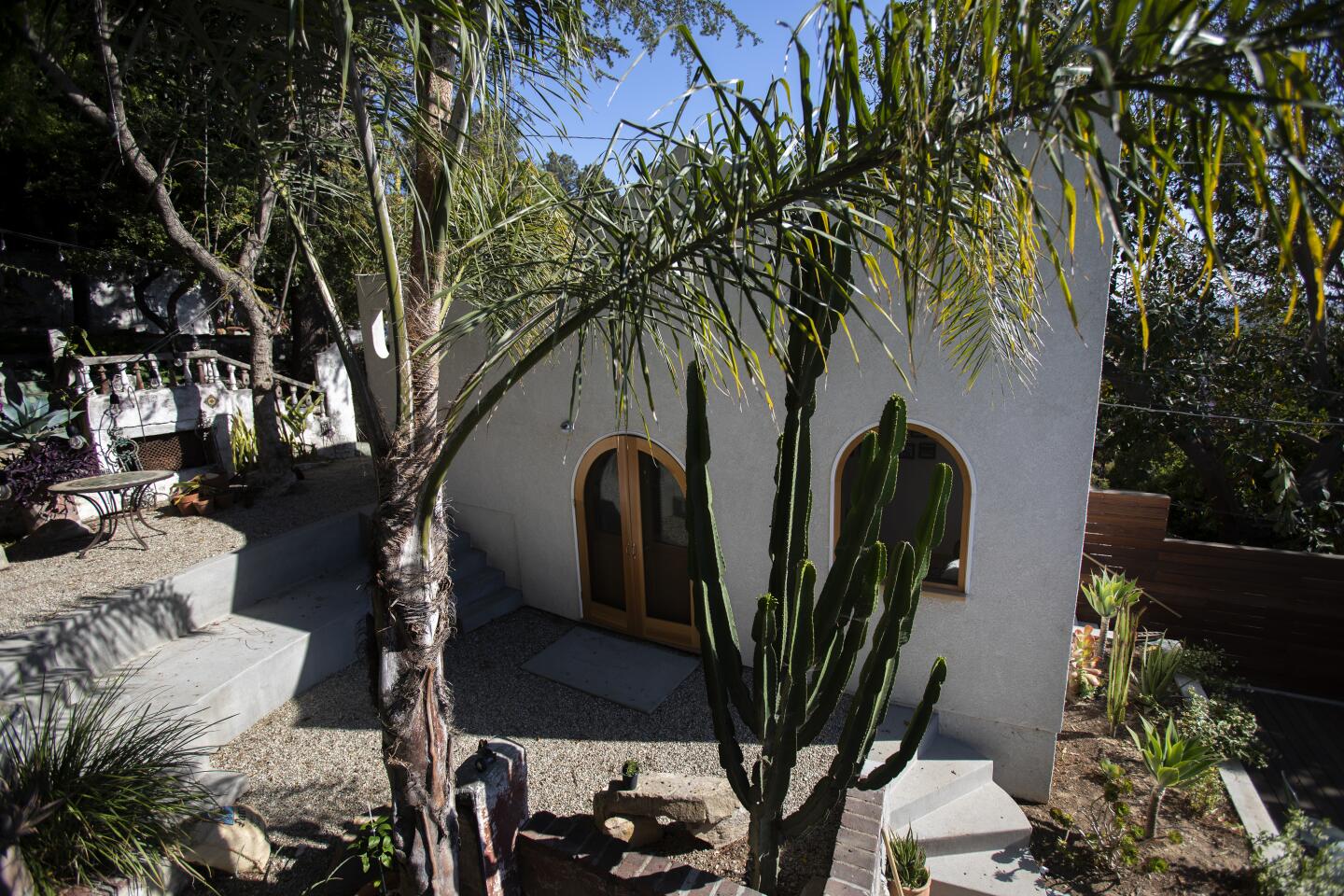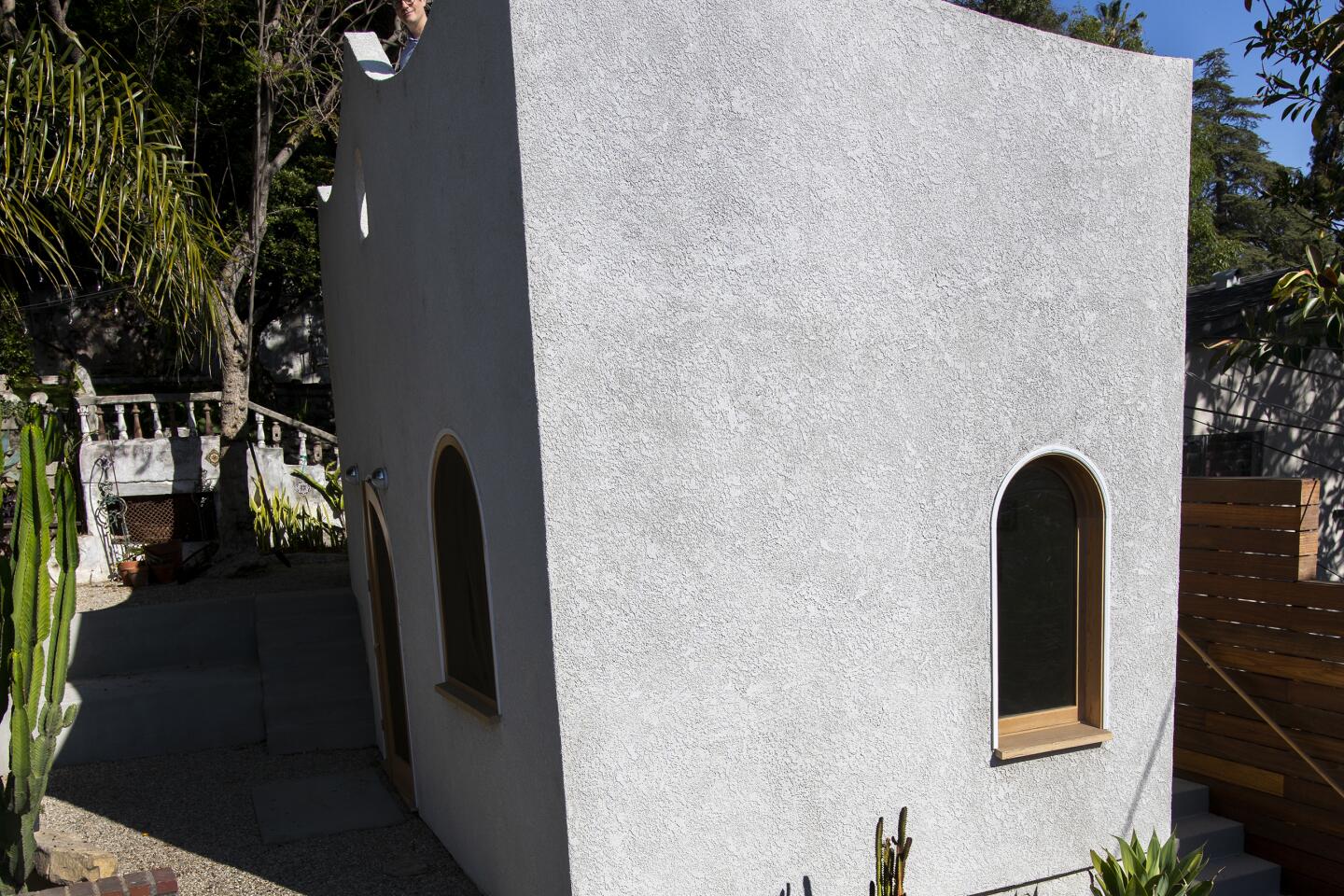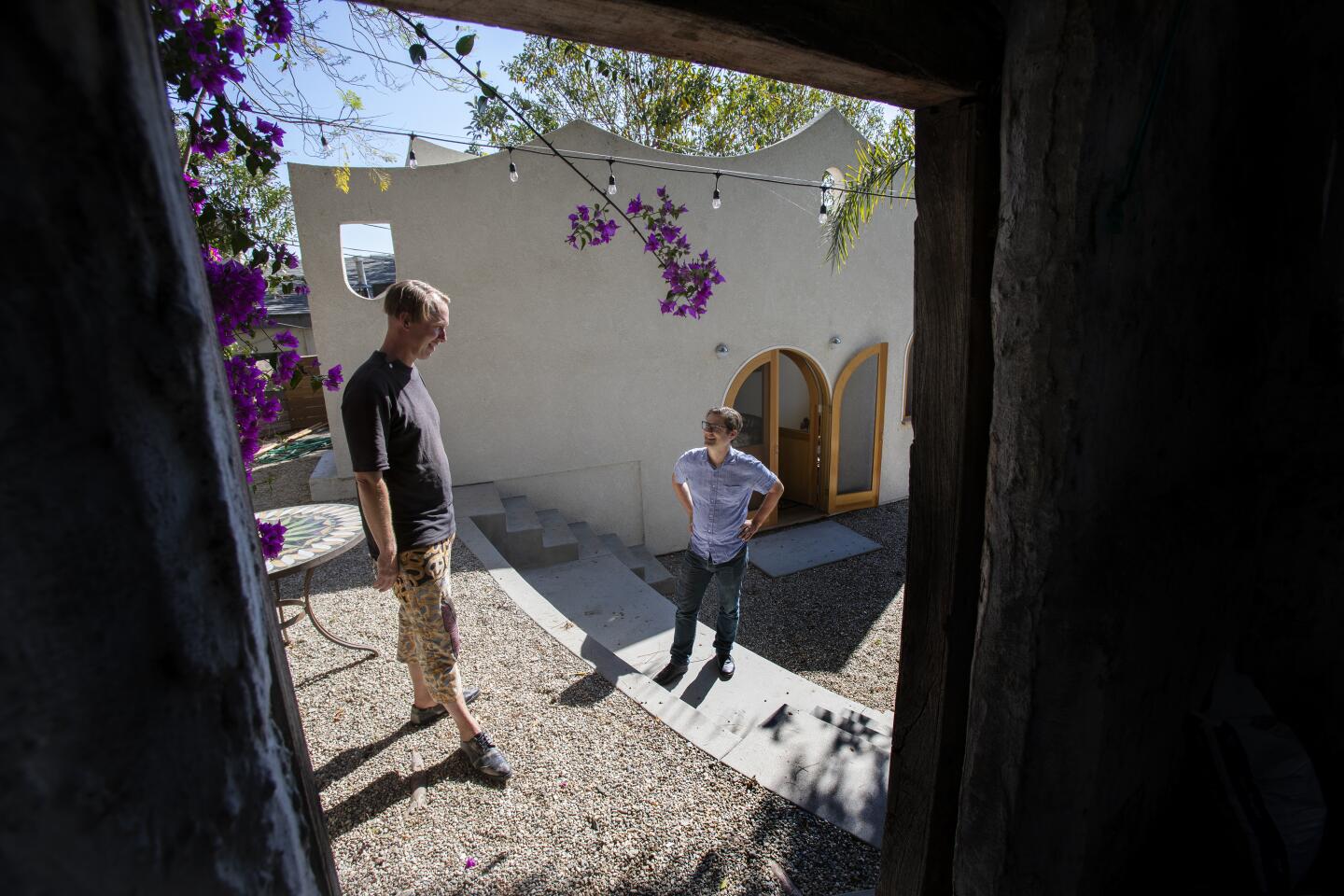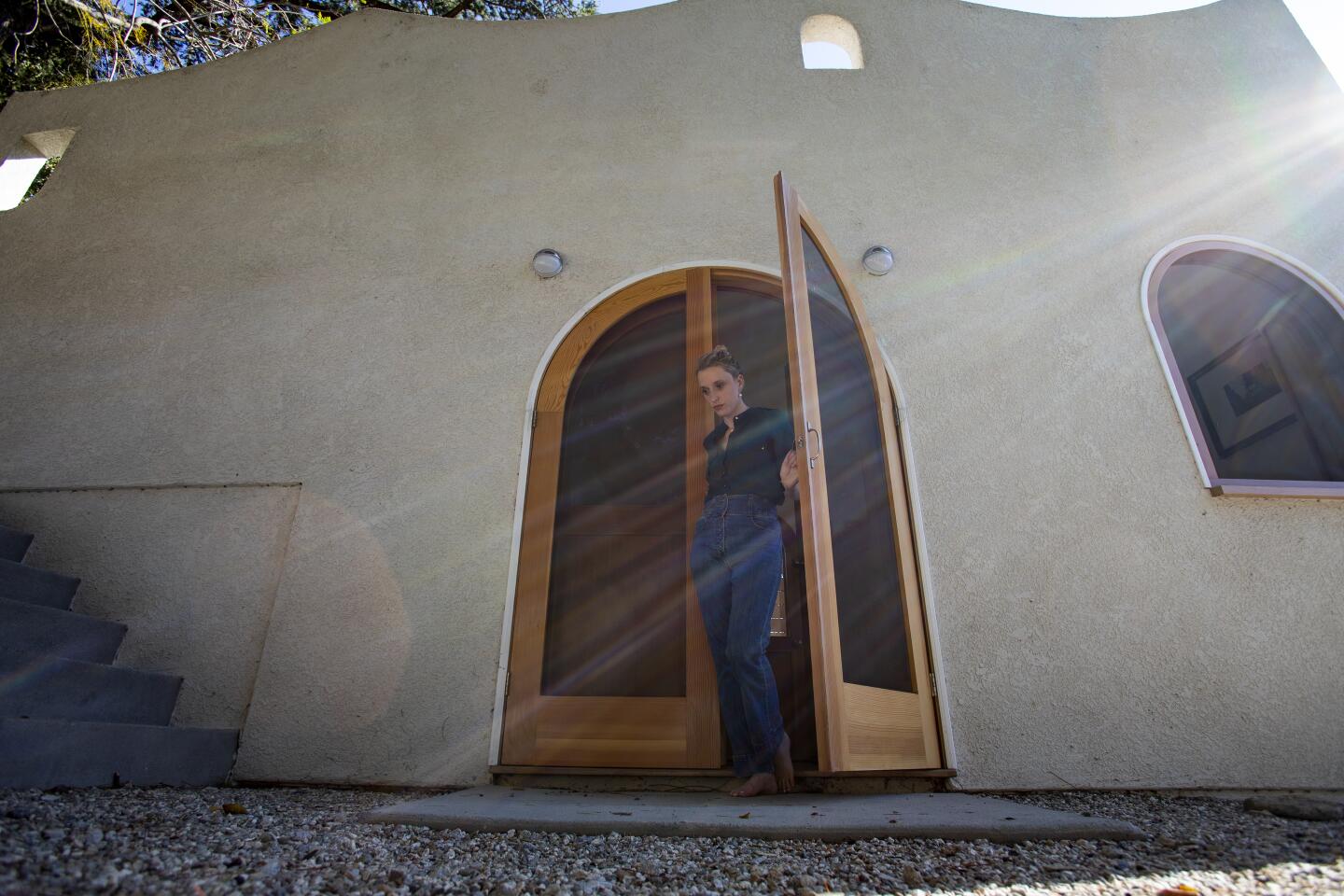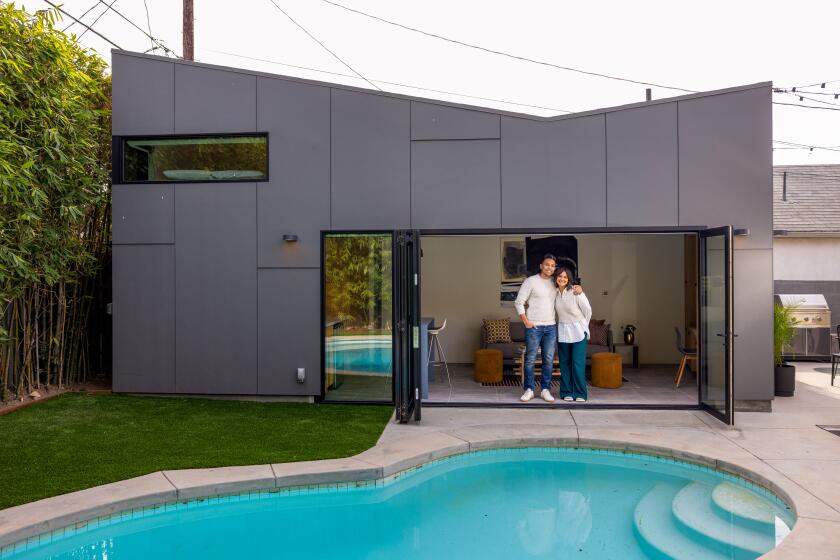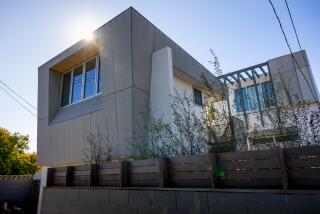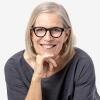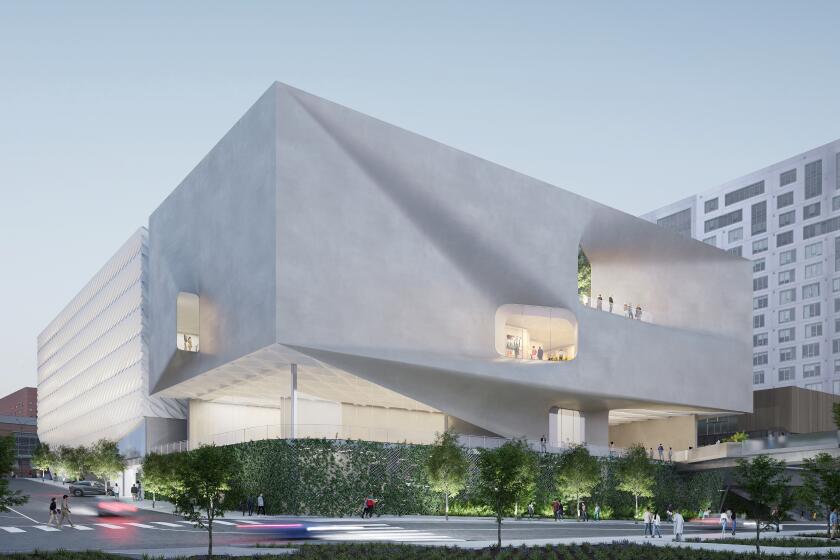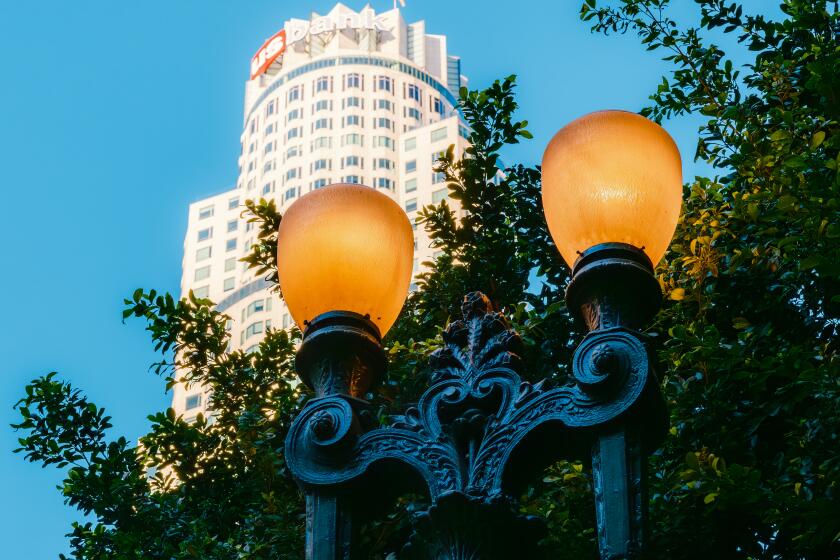She turned an unpermitted backyard studio into the ultimate WFH hideaway

When filmmaker and poet Jane Stephens Rosenthal purchased her 1905 Craftsman-inspired house in Elysian Heights in 2013, she was particularly charmed by the backyard’s idiosyncratic hand-built structures.
The previous owner, a set decorator, had adorned the steep, multilevel yard with theatrical arches, a rustic stone fireplace and a disintegrating, unpermitted open-air pavilion, which included electricity.
“The yard is what captivated me,” says Rosenthal. She enclosed the pavilion and turned it into her writing studio.
Designed as a two-story building, this Craftsman-inspired accessory dwelling unit (ADU) occupies the top floor, leaving room below for outdoor living. She says it saved her from financial ruin during the pandemic.
But she also knew that the unpermitted structure was not a long-term solution. “It was a hazard,” recalls designer Ben Warwas.
Rosenthal reached out to architect Chris Skeens, who along with Warwas, is fresh off receiving a merit award in the category of additions and accessory dwelling units at this year’s American Institute of Architects, Los Angeles residential awards.
In the hopes of creating a writing studio as unique as the original structure, Rosenthal asked the pair to design something fresh and new for her backyard.
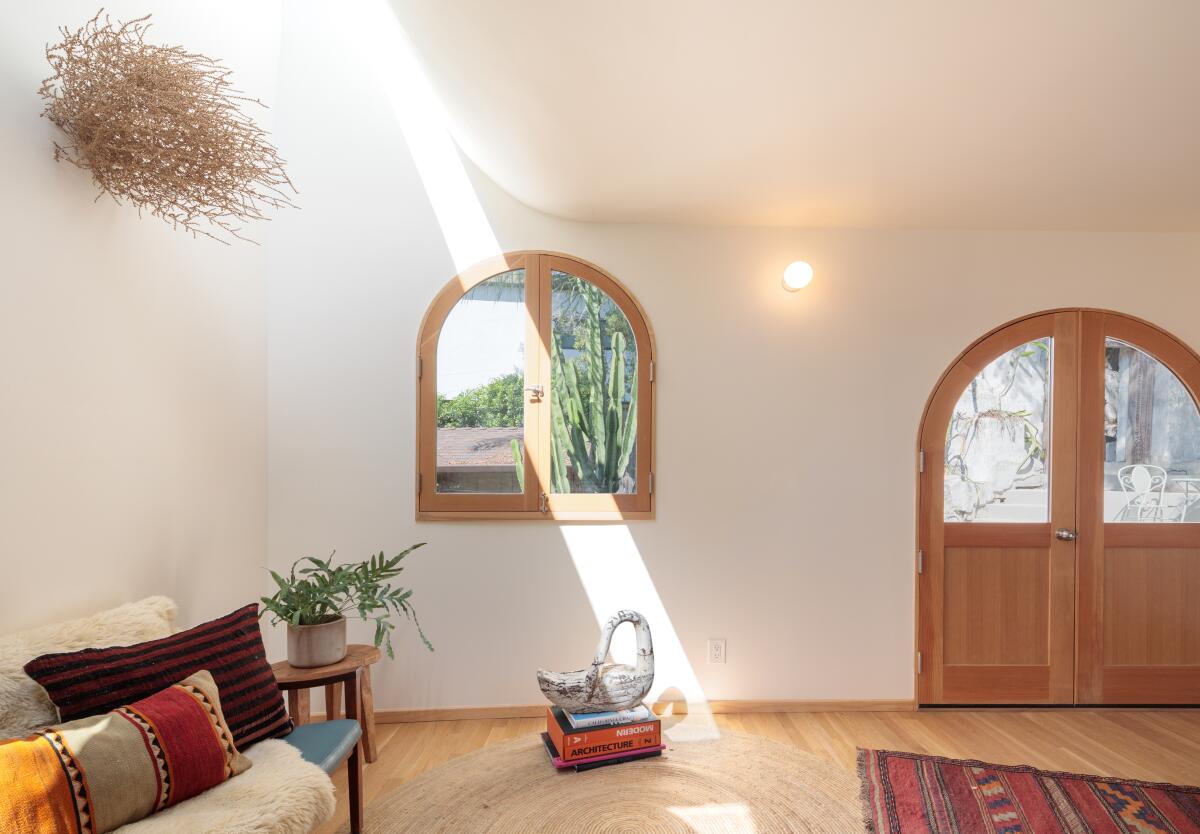
“I wanted my own space to work,” says Rosenthal, who is working on a coming-of-age feature. “But I also wanted to keep that whimsical vibe.”
The result? The ultimate WFH cave, the result of intense collaboration between artist, designer and architect. After 12 months of work, held up by significant delays due to the COVID-19 pandemic, they dubbed the new writing studio “Stiff Peaks” to acknowledge its most dramatic feature — a scalloped parapet that resembles beaten egg whites and disguises a roof deck where Rosenthal can catch some rays and not be seen by her neighbors on the hill next door.
Architect professor Alexis Navarro designed and built an accessory dwelling unit that is affordable and attractive. The result is inspiring.
The designers started with a box-themed structure, but Rosenthal wanted something more dynamic and interesting. “I wanted a hovel, a hut,” she says.
Skeens and Warwas were delighted by her response and proceeded to research primitive stucco huts.
The designers met while attending graduate school at the Southern California Institute of Architecture (SCI-Arc). In this project, their deft blend of the Los Angeles vernacular — Spanish revival and storybook architecture — served as inspiration for the studio, totaling 480 square feet including the rooftop deck.
“We looked at interesting ceilings,” Warwas explains. “Once we removed the Spanish roof, it became about the parapet and continuing the Mediterranean logic.”
The studio was designed and permitted as a recreation room (if it included a kitchen and full bath, it would be considered an ADU) where Rosenthal can write and create, and many of its design elements — a skylight that brings the outdoors in and custom arched windows and doors inspired by Jacqueline Kennedy Onassis’ beach house on the Greek Island of Skorpios — give the hut the feel of a sacred space.
“The contractor thought we were building a church,” Skeens says with a laugh.
Adds Rosenthal: “I take all my meetings in the studio, and when I Zoom, the arched windows are all anyone talks about.”

Because the studio, which includes a half bathroom, faces the main house, the designers placed the windows so Rosenthal looks out into the yard and not at the house, a move that makes the studio feel like an escape. “The windows draw you outside,” she says.
The furnishings are minimal, including a small couch and two chairs and a modest antique desk where Rosenthal works bathed in natural light. Bohemian textiles, works of art and books add personality and warmth to the interiors, but the custom windows and doors give the studio a classic California indoor-outdoor feel.
Perhaps most impressive is the writing studio’s rooftop deck, an open room hidden by a curved parapet, which offers views of downtown Los Angeles. Here, Rosenthal can take a break from work and experience cool ocean breezes from the west under the shade of a mature tree canopy.
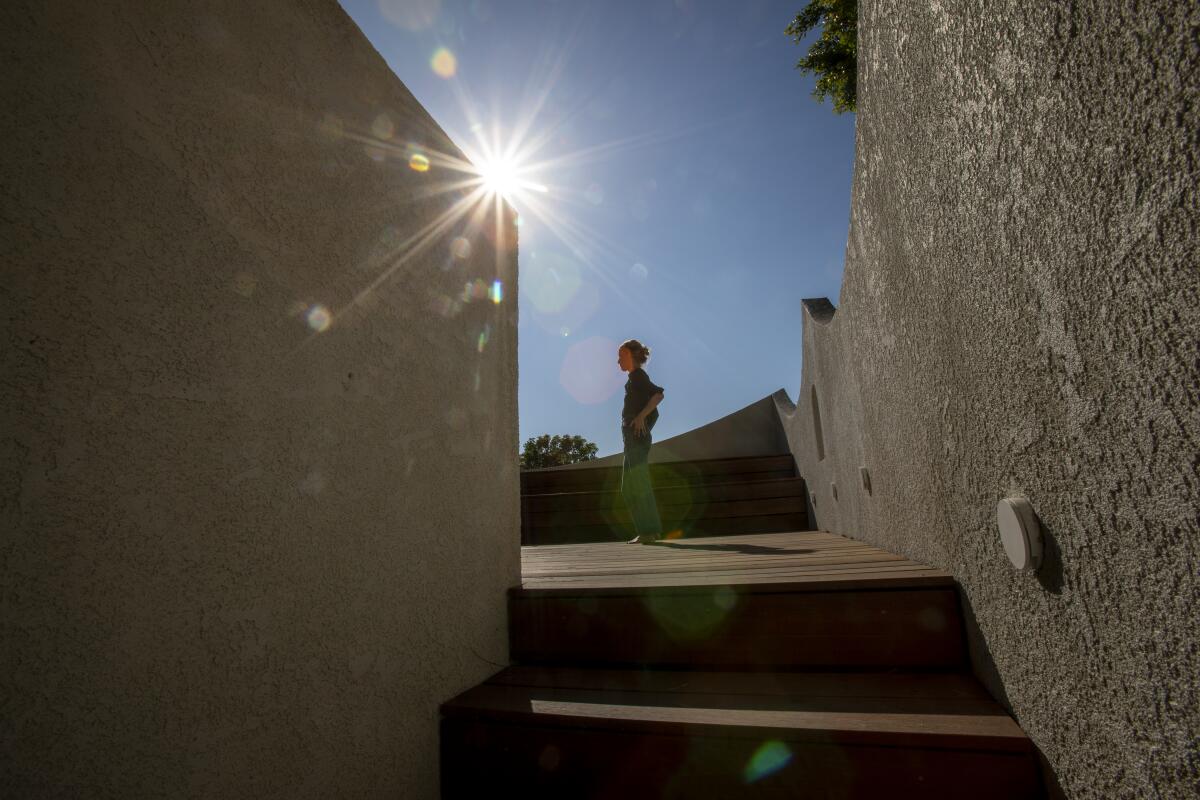
“Because it’s on an intense hill, we saw the building as an extension of the landscape,” says Skeens. “Jane can peek over the house and see downtown Los Angeles and Echo Park.”
For this pair, who collaborated on all aspects of the addition with help from Rosenthal, the playful elements are as important as creating an efficient work-from-home environment in a small footprint.
Small-space living doesn’t mean you have to sacrifice style or succumb to clutter.
The project’s footprint, while small, involved extensive excavation and foundation work due to the hillside location — a retaining wall was necessary to hold up the hill.
In architecture, the client is often as important as the architect, Warwas says.
“She was a courageous client,” Skeens adds. “But then, she is an artist herself. She carried the concept through with us and became one of the collaborators. Ultimately, it was about creating different perspectives and moments and seeing things in new ways.”
More to Read
Sign up for our L.A. Times Plants newsletter
At the start of each month, get a roundup of upcoming plant-related activities and events in Southern California, along with links to tips and articles you may have missed.
You may occasionally receive promotional content from the Los Angeles Times.
